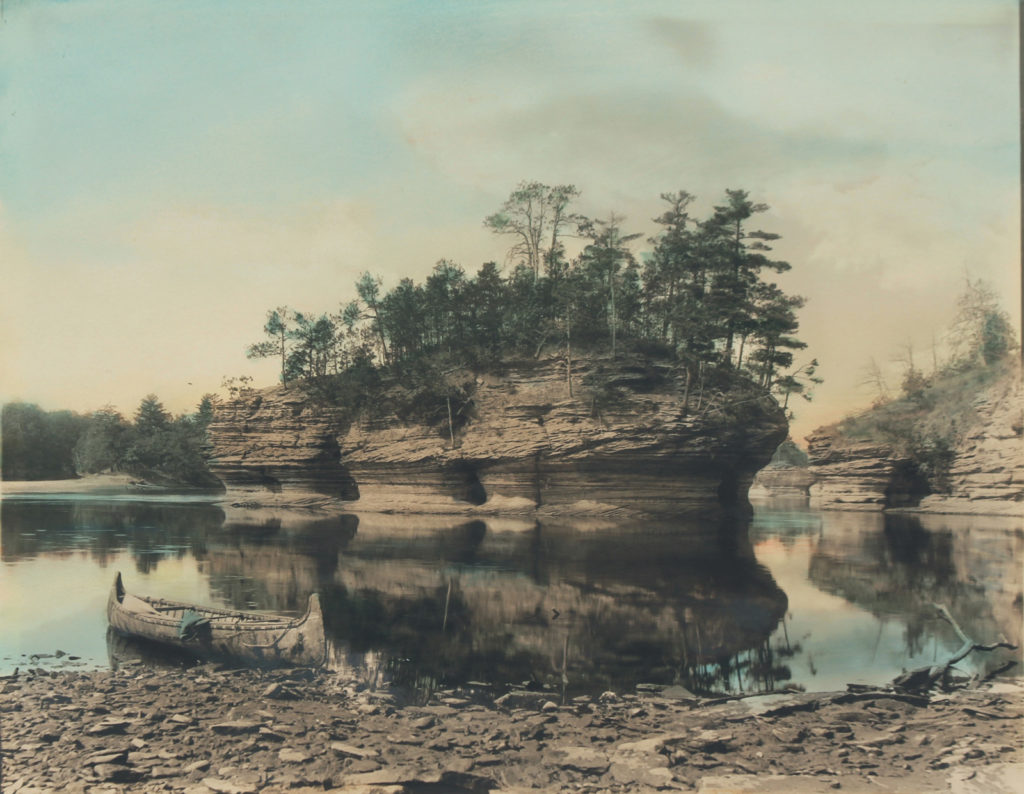What is it?
Artist
Henry Hamilton (H.H.) Bennett (Farnham, Quebec, Canada 1843–1908 Madison)
Title
Lone Rock with Canoe
Year
1900
Medium
Albumen print with hand-tinting
Dimensions
7 ¼ x 9 ¼ in.
Credit line
Gifted 2004, Gary John Gresl
About the Work
About
Henry Hamilton Bennett was the right man in the right place at the right time. This happy combination yielded one of the great bodies of nineteenth-century photography as well as a significant catalyst in the evolution of the Wisconsin Dells from a remote natural wonder to the self-proclaimed “Waterpark Capital of the World.”
Bennett took up photography after fighting in the Civil War. He was the first artist to extensively photograph the scenic rock formations of the Dells, which was no small feat since the primitive photographic equipment of the late 1860s required him to cart a portable darkroom, his camera, and chemicals into the field. Bennett’s business acumen was as much a part of his success as his artistic eye. In the 1870s, he had the ingenious idea of using his photography as promotional advertisements to lure potential tourists to the idyllic landscapes of what was then the western frontier. A mutually beneficial relationship with the railroad industry was born. Bennett sold his photographs in bulk to the Chicago, Milwaukee and St. Paul Railway, attracting ever-increasing numbers of tourists to what was then perceived as the exotic West.
Lone Rock with Canoe is one of Bennett’s most iconic images. This late career albumen print is rare for the addition of color, which Bennett painstakingly applied by hand. The empty canoe in the foreground not only provides scale but evokes a sense of nostalgia at a moment when the Dells was already on the cusp of transformation. More than a half-century after his death, Bennett’s art-historical stock rose when the Museum of Modern Art’s influential curator of photography John Szarkowski heralded Bennett’s “fairy-story landscapes” and included them in groundbreaking exhibitions of American photography.

